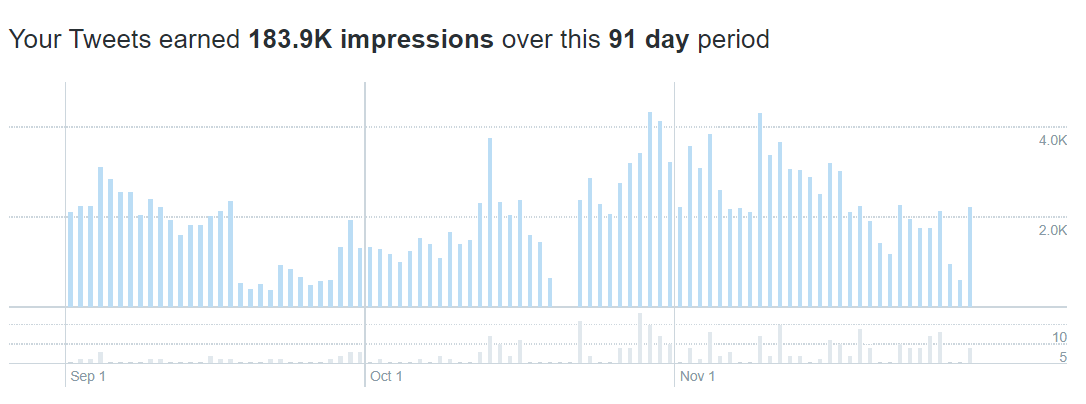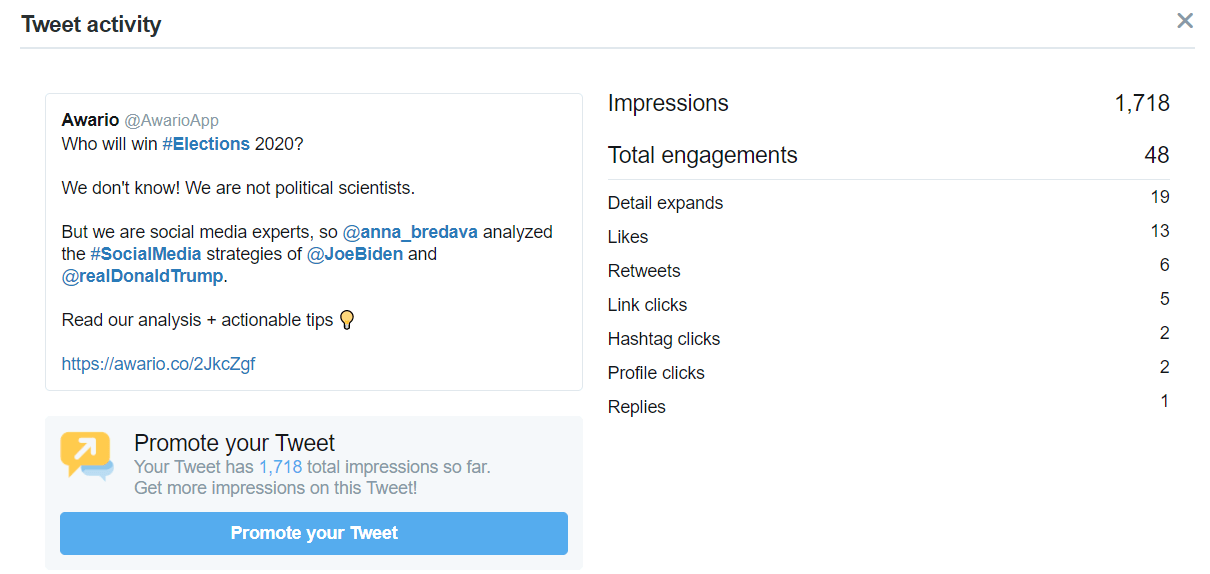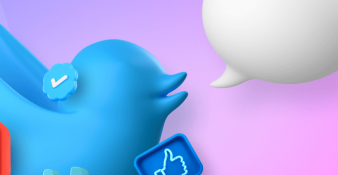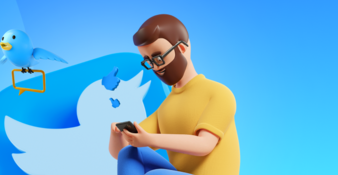4 components of engaging Twitter posts (based on our experience)

How to make your Twitter posts truly engaging?
This might be one of the questions that keep you and millions of other marketers up at night.
I am afraid there is no shortcut.
To make sure your posts get the attention they deserve you have to first build your following, play the algorithm, collaborate with influencers, engage with the posts, conversation, and Twitter chats of other people and companies... and so on.
Twitter marketing (in fact, any social media marketing) has never been easy, and those who expect a sudden result will inevitably get disenchanted.
However, however...
There still can be components that increase or decrease the level of engagement your account gets. These are the components that have nothing to do with the actual content of the post. These can be the number of hashtags, the length of a tweet, the presence or absence of emojis, and so on.
By signing up I agree to the Terms of Use and Privacy Policy
We at Awario decided to analyze our own tweets to determine which components influence the level of impressions and engagement. We decided to take a year of tweeting to get the most comprehensive results.
To do that, I went to Twitter's built-in analytics, set the date range (you can only look at a range of three months at a time), and observed the results.
The first thing you see in the analytics is the level of impressions over time.

Below, there is a list of top tweets for this time period. Twitter shows the number of impressions and engagements for each of the top tweets, and the engagement rate.

If you click View Tweet activity, you'll see a more detailed breakdown.

So I took the posts that had the most level of engagement and looked at what components made them stand out from the rest of our posts.
This is what I discovered.
1. The extraordinary importance of a question mark
Use a question mark! Or rather, ask questions and be truly interested in what your followers have to tell you. As it's often pointed out in different Carnegie-like books and Ted Talks, you don't have to fake interest if you're truly interested in what the other has to say.
From our account's analytics (and from the experience of every extroverted and popular person out there), it is clear that questions are powerful. They increase engagement significantly, and the more questions we ask (in Awario's tweets, five was the maximum), the more engagement we get.
Of course, this makes a lot of sense. By asking questions you directly invite people to engage with your post. You show your interest in their opinion, give them the opportunity to share their thoughts and believes, and sometimes even complaints and critique. And, it gives people and yourself a chance to bond, banter, and discuss something completely irrelevant to your brand's niche. Isn't this what social media is all about?
What job do you wish existed?
— SEMrush (@semrush) December 3, 2020
The best social media managers out there stir up whole Twitter discussions starting out by asking a simple question.
And sometimes they don't even need the actual question mark for that.
2020 smells like _____.
— AXE (@AXE) November 30, 2020
Hats off to AXE, this is amazing social media marketing.
2. The vitality of mentioning other people (not brands!)
We at Awario mention other brands a lot. And sure, we get some engagement from mentioning brands - mostly from these very brands. Social media managers are grateful, sociable, and polite people, so they usually reply to mentions of their brands (as they should). But a dialogue rarely comes out of such mentions.
From this tiny research I did, it became clear that mentioning other people results in a completely different situation. If a mentioned person isn't an Internet celebrity (or any other sort of celebrity), they gladly engage in a conversation, increasing the engagement hugely by doing so.
The best people to mention are micro-influencers in your niche. It's almost guaranteed they will reply, and they might bring some of their followers (and your target audience) with them. To find your niche micro-influencers, sign up for Awario, and enter your niche's keywords (yes, this is shameless advertising).
Turn your Twitter feed into a marketing course!
— Awario (@AwarioApp) August 6, 2020
Here are people to follow:@MattNavarra @wongmjane @randfish @neilpatel @larrykim @MarketingProfs @MadalynSklar @MarshaCollier @jeffbullas @ab80 https://t.co/DjJa0YyLOy
But also, you might want to do a Twitter hack and invite others to tag someone. I found that this brings even more engagement!
Tag someone who crushes social media on LinkedIn. ⚡️
— Buffer (@buffer) December 3, 2020
3. The clearness the enumeration brings
Unlike other findings, this one came sort of unexpectedly. I never looked at enumeration as something that could be considered a specific "component", but here you go. From our analytics, I discovered that enumeration brings more impressions and more engagement. This is compared to both emojis and the absence of bullet points.
A quick analysis suggests that firstly, this is because people perceive the information better when it's numbered. If there is a link from a social media post, enumeration makes it more clear what the link will be about. Unlike emojis that can be quite distracting, numbers don't annoy you in any way. Secondly, from my vast experience with A/B testing, I can tell that numbers attract attention. In the sea of letters, they stand out better than anything else and make people click, like, and reply to the post.
Of course, we're not the only ones using numeration in posts to break down what's in it. It seems to work for others just as well.
Trend 3️⃣: Conversational marketing will drive sales.
— Buffer (@buffer) October 29, 2020
Tip 3️⃣: Reveal the human side of your brand and respond to comments in a timely manner, and think of posts as conversation starters.
4. The power of humor
We've talked a lot about using humor in social media marketing. It's not only our posts that do better when they are even a little bit funnier. It's all the brands we've ever analyzed: Oatly, Spotify, Taco Bell, even PornHub.
Whether you're selling food, sex, money, or safety - humor is the component that attracts engagement. People like to laugh no matter who makes the joke - as long as the joke is good.
the sexual tension between you and the like button
— AXE (@AXE) September 3, 2020
The bank of American can do it. The CIA can do it. There really aren't many industries left for which humor would be totally inappropriate.
Sorry for not following you back @TheEllenShow. But if you visit us maybe we can take a selfie? #twitterversary
— CIA (@CIA) July 7, 2014
The whole different thing is timing. This is the component you should be very careful about. Not to get into trouble for making a joke at the wrong time, you as a social media manager should be always aware of the latest news and events. Most of us are anyway - we live in a constant influx of information. However, if you're thinking of taking a break and reading less about what's happening, leave that thought. Or, have someone else deal with social media for a while.
For the same reason, the worst thing you can do in social media marketing is schedule funny posts in advance. Unfortunate scheduling has been the reason for many social media crises for a number of brands in the past year.
What about hashtags?
While analyzing Awario's account, I didn't find that the presence of hashtags significantly changes the engagement rate. However, there is one thing worth mentioning.
While common popular hashtags ( (e.g., #SMM, #socialmedia, #Twitter) don't seem to make a difference, the more specific and short-lived hashtags (#MondayTip, #QuestionOfTheDay) slightly increase the number of impressions.
What about emojis and length?
For Awario's Twitter account, emojis also don't seem to make a difference. Seems like you can use them just for fun! The same goes for length - besides, there isn't much room on Twitter for testing for length anyway.
Beyond the specific components...
While the mentioned components are great to keep in mind and use as often as you can, the overall Twitter strategy requires more than that. Now you're probably thinking: "Sure... expertise, useful content, V A L U E".
Now sit down, because, in fact, this is not true.
At least, this isn't always true.
Most very successful brand accounts aren't about educating their followers and bringing immense value into their lives. Indeed, this is pretty hard to do in 280 characters.
Twitter is about entertainment. It's about one-liners. It's about making a brand seem like a friend.
This means that first and foremost, your brand account should look and feel like an account of a real person. This isn't hard - after all, it's led by a very real person, maybe even you! Unlike what Google often suspects, you're not a robot. You or your social media manager have a personality, and so should your brand. Ideally, those two should match - then, your brand's social media marketing would be fun, seamless, unique, and most importantly, sincere.
Examples of such perfect match can be found on PornHub's social media accounts and on MoonPie's Twitter.
One day my grandchildren will ask me what I did for a living and I will probably lie to them
— MoonPie (@MoonPie) November 13, 2020
Following these brands is like following friends: in the first example, she is a sexy, funny, and cool friend who you might have a little crush on, and in the second example, the guy is a goofy and also funny kid who seems like someone you know from your college days.
These social media managers don't seem like they are pretending - probably, they aren't. They are just a similar character to what their brands strive to have.
And that's everything marketers who want to rock it on Twitter should aim to achieve.













